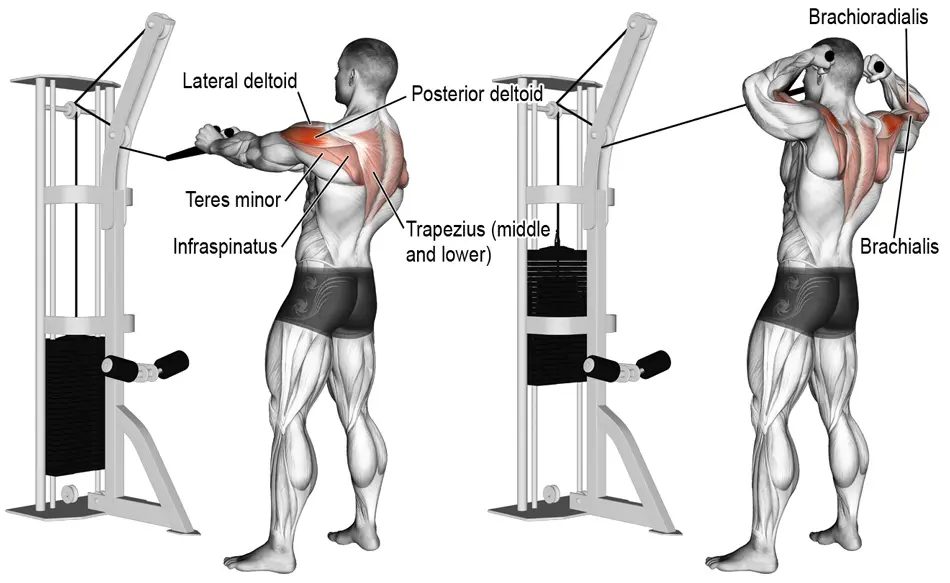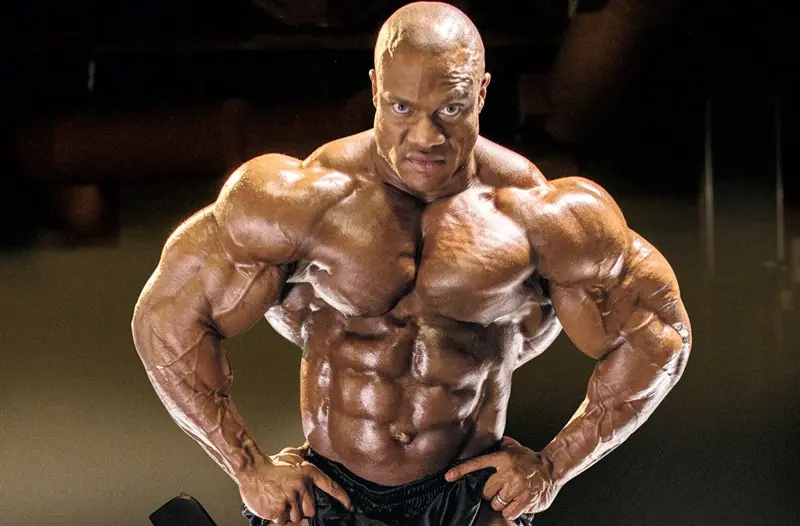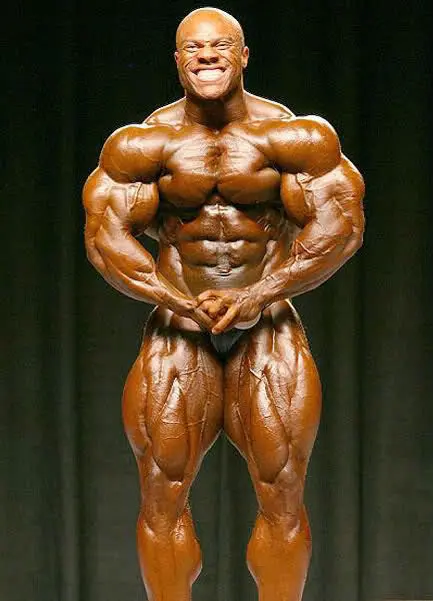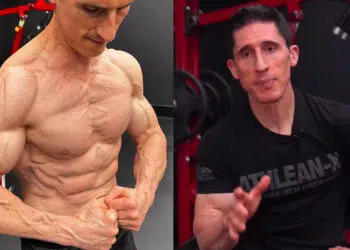It’s not always about the free weights for building muscle, strength, and balance.
Sometimes you have to make time for the exercises which will help your overall training and development. And the face pull is one of those exercises… it targets your upper posterior chain (Backside of the body) muscles.
The face pull is a necessary movement in a complete training routine and its popularity among gym-goers and athletes has risen dramatically recently. But that’s because it’s very beneficial as an accessory movement and is an all-around effective exercise.
How To Utilize The Face Pull For More Gains
It’s not a power movement and you shouldn’t train with massive amounts of weight because that is not its intended purpose.
But you’ll definitely see the difference in your training and here we’ll discuss the muscles worked, benefits, exercise instructions, tips, and variations.
- Targets: Rear deltoids, upper back muscles
- Equipment Needed: Cable pulley machine
- Level: Intermediate
Muscles Worked

The face pull works the upper posterior chain muscles which include rhomboids (Upper back), rear deltoids, trapezius, and even the biceps since it’s a pulling movement.
Level Up Your Fitness: Join our 💪 strong community in Fitness Volt Newsletter. Get daily inspiration, expert-backed workouts, nutrition tips, the latest in strength sports, and the support you need to reach your goals. Subscribe for free!
The rear deltoids retract and internally rotate the shoulders, while the rhomboids hold the scapula against the thoracic wall.
The rear back muscles are heavily involved in the retraction that happens during the face pull and therefore these muscles are engaged and contracted for maximum hypertrophy and strength benefits.
Benefits
The face pulls build muscle and strength in the target muscles. Now, it could be considered a compound exercise since it works many muscles of the rear.

But it’s also great for the isolation of the rear muscles. These muscles retract and engage during the face pull; which is important for pressing movements.
And according to research, single-joint and compound movements are equally effective for building muscle and strength. So the face pull is a powerful exercise for improved development. (1)
But the face pull can also help to improve posture by forcing you into better thoracic extension; which can also prevent injury of the neck and back while improving mobility in this area as well. (2)
How To Do The Face Pull
Choose a weight in which you can comfortably perform at least 10 repetitions to start. The more advanced you are, the heavier you can train but there’s no need to lift maximal poundages with the face pull.
It’s an overall effective exercise which you should train like any other muscle group but using proper form is essential. If you choose to do the face pull before any exercise then warm up with really light weight for a few sets, pyramiding up in weight for 2 sets in a sequence of 30% and 50-60% of your one-rep max.
Level Up Your Fitness: Join our 💪 strong community in Fitness Volt Newsletter. Get daily inspiration, expert-backed workouts, nutrition tips, the latest in strength sports, and the support you need to reach your goals. Subscribe for free!
But if you’ve done many back movements prior to doing the face pull then you can jump into your working sets.
Here are the instructions:
- Attach a two-sided rope to a cable pulley at about chest level.
- Stand straight with feet hip-width apart so that you’re in an upright posture.
- Grab both sides of the handle with a neutral grip or you can place one foot in front of the other for balance.
- Lower your elbows slightly but keep hands at head level.
- Pull the rope toward your face as far as you can and contract your rear deltoids while pulling both sides apart.
- Straighten your arms back toward the cable pulley.
- Repeat for the desired number of reps.
Watch our powerlifting coach shows you how to do the cable face pull:
Exercise Tips:
- Always keep the elbows slightly down during this movement. Otherwise, you injure your shoulder joints and cause impingement issues.
- Always use a moderate weight that you can handle. Going too heavy will compromise good form and the target muscles will not receive optimal stimulation.
- Position the cable pulley at chest level. If you set it too high your shoulders will be in a dangerous position.
- Perform the same number of sets and reps as you would any other exercise in your training regime.
- Warm-up properly if the face pull is the first exercise you perform in your workout.
Face Pull Variations
These effective variations should be performed exactly like the exercise instructions provided for the standing cable rope face pull. Elbows slightly down with an upright posture and light to moderate resistance.

This is important for the safety of the shoulders and maintaining proper form.
Seated rope face pull
This variation is identical to the standing cable rope face pull but you’re seated instead. It’s rather simple and all you need is an upright seat or an adjustable bench.
Set up the seat in front of the cable pulley and perform the exercise with a rope the same as you would if standing.
Band face pull
This variation is performed with a band rather than a cable pulley. You can wrap the band around a pole or bar and perform the movement exactly the same as you would with a rope. T
here’s still a constant tension using the bands, similar to cables; which is definitely beneficial for muscle hypertrophy.
Single-arm cable face pull
You’ll perform this exercise as you would a standing cable rope face pull. However, you’ll use a single grip rope and do the movement one side at a time.
This will improve unilateral (Affecting one side) function which is beneficial for muscle balance, core stabilization, and even for rehabilitation purposes. If you’re an athlete, the single-arm face pull is a great movement to add to your training routine. (3)
Final Thoughts
If you want to take your training to the next level, then make sure to include the face pull in your workout routine. This excellent movement will assist in your compound lifts, contribute to improved posture, and make you better-rounded regarding your muscular development.
Try out the different variations and watch how you progress with this beneficial movement. Again, the face pull is not intended to be a power exercise but it doesn’t need to be, for the benefits it provides.
The face pull is here to stay and it’s a great addition to any workout plan!
References:
- Gentil P, Soares S, Bottaro M. Single vs. Multi-Joint Resistance Exercises: Effects on Muscle Strength and Hypertrophy. Asian J Sports Med. 2015 Jun;6(2):e24057. doi: 10.5812/asjsm.24057. Epub 2015 Jun 22. PMID: 26446291; PMCID: PMC4592763.
- Stull, K. (n.d.). Optimizing Thoracic Spine Mobility with Corrective Exercise.
- The Benefits of Unilateral Training. (2018, June 18).
Interested in measuring your progress? Check out our strength standards for Face Pull.








